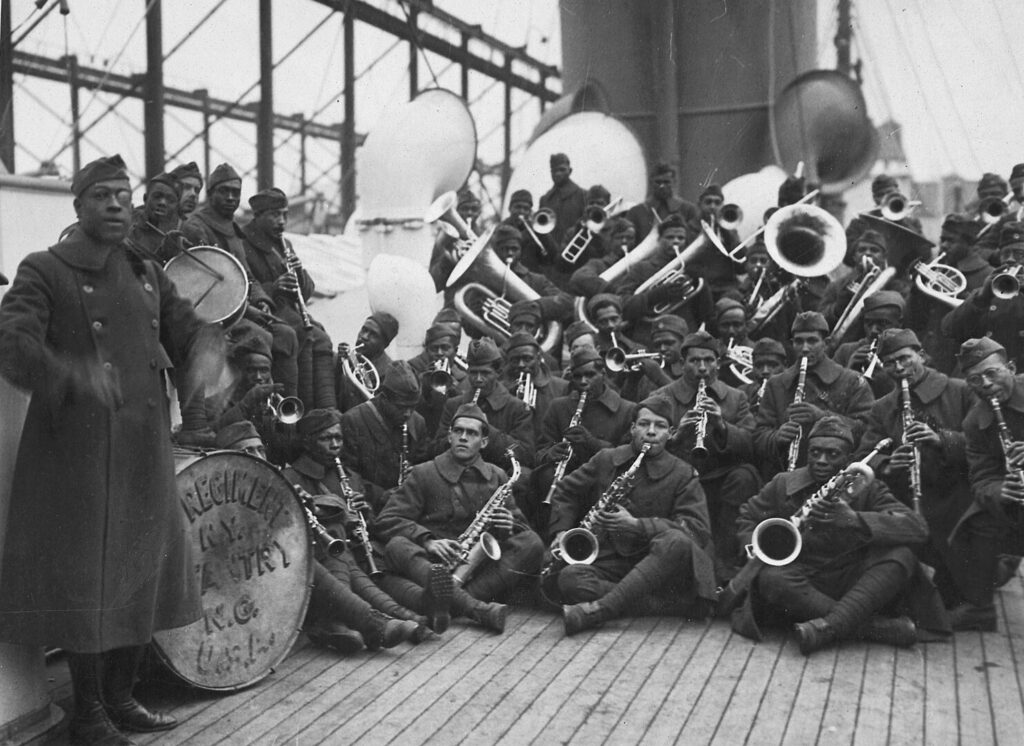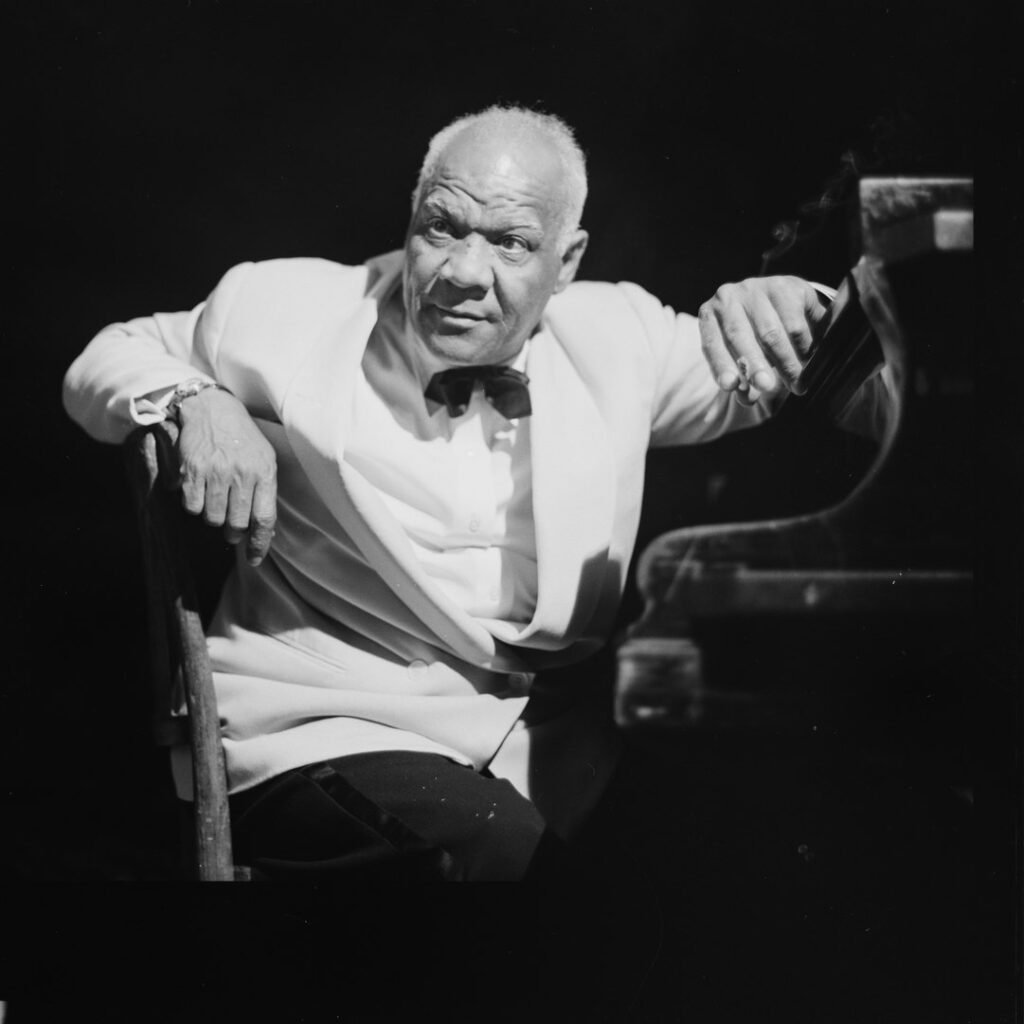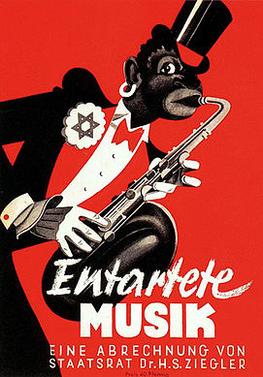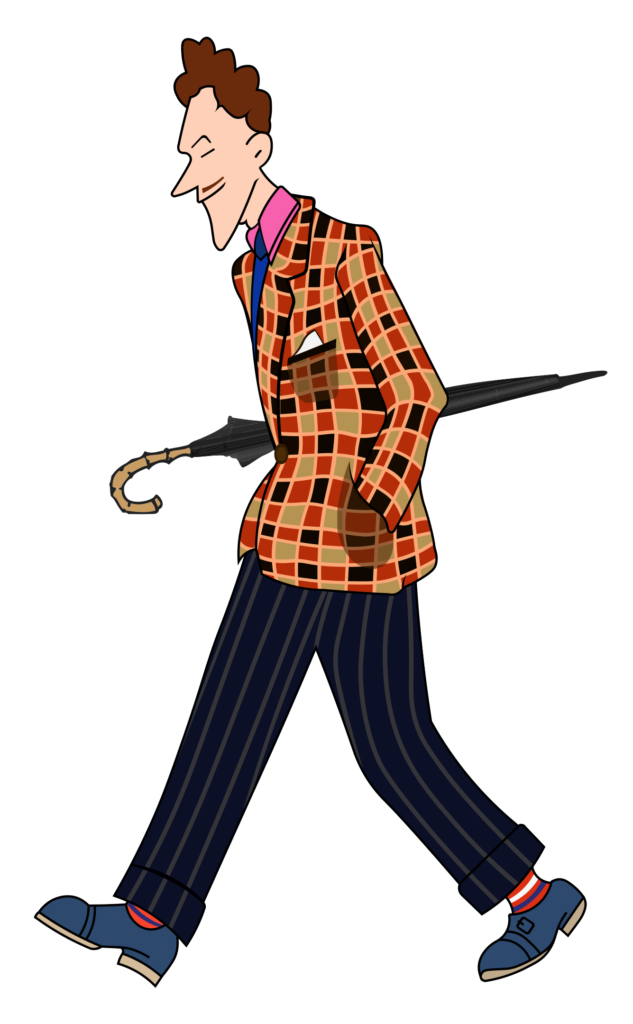
By Underwood & Underwood – U.S. National Archives and Records Administration, Public Domain, https://commons.wikimedia.org/w/index.php?curid=125604813
The story of jazz in France is a fascinating tale of cultural exchange, artistic innovation, and social transformation. This distinctly American music genre, rooted deeply in African-American culture, found a second home in Paris, a city renowned for its appreciation of art and artists. This blog post delves into how jazz was introduced to France and the indelible impact of African-American jazz artists on the Parisian music scene.
Jazz Crosses the Atlantic
Jazz first made its way to France during World War I, when African-American soldiers serving in the U.S. Army brought the sounds of ragtime and early jazz with them. The Harlem Hellfighters, an all-black regiment, were among the key contributors, with their regimental band led by James Reese Europe, a prominent figure in the New York music scene. The lively, improvisational nature of jazz captured the hearts of the French public, offering a stark contrast to the more rigid structures of traditional European music.
The Roaring Twenties: A Jazz Hotspot in Paris
The 1920s, known as the Jazz Age, saw Paris becoming an epicenter for jazz. This period coincided with the Great Migration in the United States, where many African Americans moved northward to escape the harsh realities of the Jim Crow South. Some of these musicians ventured further, crossing the ocean to Paris. The city’s open-minded and bohemian atmosphere provided a fertile ground for these artists to flourish, free from the racial prejudices of their homeland.
Iconic Figures and Their Legacy

By ETH-Bibliothek Zürich, Bildarchiv / Fotograf: Comet Photo AG (Zürich) / Com_M03-0103-0002 / CC BY-SA 4.0, CC BY-SA 4.0, https://commons.wikimedia.org/w/index.php?curid=99329375
Several African-American jazz artists left a lasting impact on the Parisian music scene. Josephine Baker, already a sensation for her dance, also influenced the jazz culture with her performances at venues like the Folies Bergère. Sidney Bechet, a virtuoso saxophonist and clarinetist, became a major figure in the Paris jazz scene, enchanting audiences with his passionate playing and becoming a key figure in the introduction of jazz to France.
Duke Ellington, Louis Armstrong, and many others visited Paris, each leaving their mark. Their music spoke to themes of freedom and expression, resonating deeply with a post-war French society eager to embrace new cultural experiences.
Jazz as a Symbol of Liberation
For the French, jazz was more than just music; it was a symbol of freedom and modernity. The genre’s emphasis on improvisation and personal expression represented a break from traditional norms, both musically and socially. Jazz clubs sprang up across Paris, becoming spaces where people of all backgrounds could mingle and enjoy the universal language of music.
Enduring Influence and Resistance

By entartete musik poster, Fair use, https://en.wikipedia.org/w/index.php?curid=5661497
The influence of African-American jazz artists in France extended far beyond the interwar period, playing a significant and symbolic role during World War II. Under the Nazi occupation, jazz faced severe repression as it was labeled “Entartete Musik” (degenerate music) by the regime, primarily due to its African-American origins and its association with freedom and rebellion.
The Nazis, promoting their racial ideology, condemned jazz for its improvisational style and its roots in African-American culture, which they derogatorily referred to as “Negermusik” (Negro music). Despite these attempts to suppress it, jazz did not disappear; instead, it went underground, becoming a form of silent but potent resistance against the Nazi occupation.
French and expatriate jazz musicians continued to play in hidden basements and secret gatherings. These underground jazz sessions became more than just musical events; they were acts of defiance, symbols of the free world, and the antithesis of Nazi oppression. The music served as a subtle form of protest, a way for both musicians and audiences to express their opposition to the occupation and their longing for freedom and democracy.
Moreover, jazz music played a role in the actual Resistance movement. Resistance fighters used jazz gatherings as cover for meetings, and jazz songs were sometimes used to transmit messages covertly. The very act of playing or listening to jazz during this time was a risky statement of dissent.

By Zazou h ill.png: jnlderivative work: anonymous – Wikimedia CommonsFiverr.com, CC BY-SA 4.0, https://commons.wikimedia.org/w/index.php?curid=101757953
This period also saw the emergence of “The Zazous”, a group of young French people who embraced jazz and its culture as a form of rebellion against the authoritarian regime and its strictures. They often gathered clandestinely to listen to banned jazz records and to dance, embracing the freedom and nonconformity that jazz represented.
After the war, the liberation of Paris led to a renaissance of the jazz scene. The end of Nazi occupation allowed jazz musicians to emerge from the shadows, and the genre once again thrived in the cafes and nightclubs of Paris. This era cemented the importance of jazz as an art form and a symbol of resilience, freedom, and the triumph of the human spirit against oppression.
Conclusion
The introduction of jazz to France, particularly through the talents and resilience of African-American artists, represents a pivotal moment in cultural history. It’s a story of how music can transcend boundaries, break down barriers, and bring people together. Today, the legacy of these artists lives on in the vibrant jazz scene of Paris, a testament to the enduring power and appeal of this truly American art form.

